The homeowners came to us with an image of a shipping container in the centre of a home. Our version is enlarged plywood ‘crate’. This restructuring of the plan has multifarious effects – it creates a new way to navigate spaces in an apartment, establishes new orders between them, and allows for the injection of several fun elements.
In its everyday permutations, the wooden crate is a most mundane and ubiquitous object for transporting goods. It is rugged and sturdy but nondescript and tossed away when unusable. In The Crate Apartment, this object is writ large to become a key component. Its symbolism as multi-functional helps to establish function and bring uniqueness to this apartment in a public housing block.
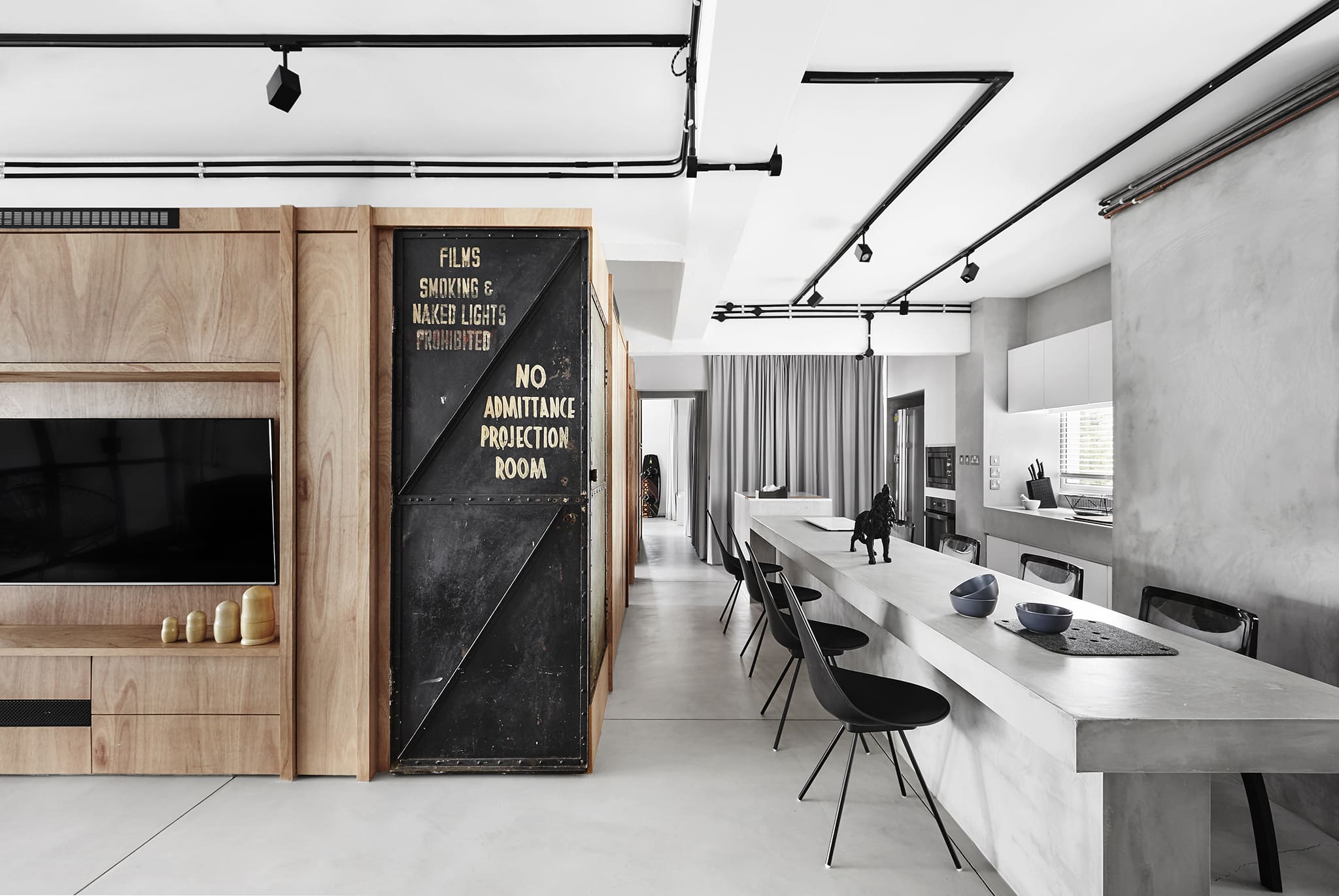
The concept came from the homeowners, who live here with their young child. They provided a picture of a red shipping container in the middle of a room; it was not so much a desire to duplicate the image more than to approach home design from an original angle. We were embolden by this and literally inserted a box – but a wooden one – into the centre of the plan.
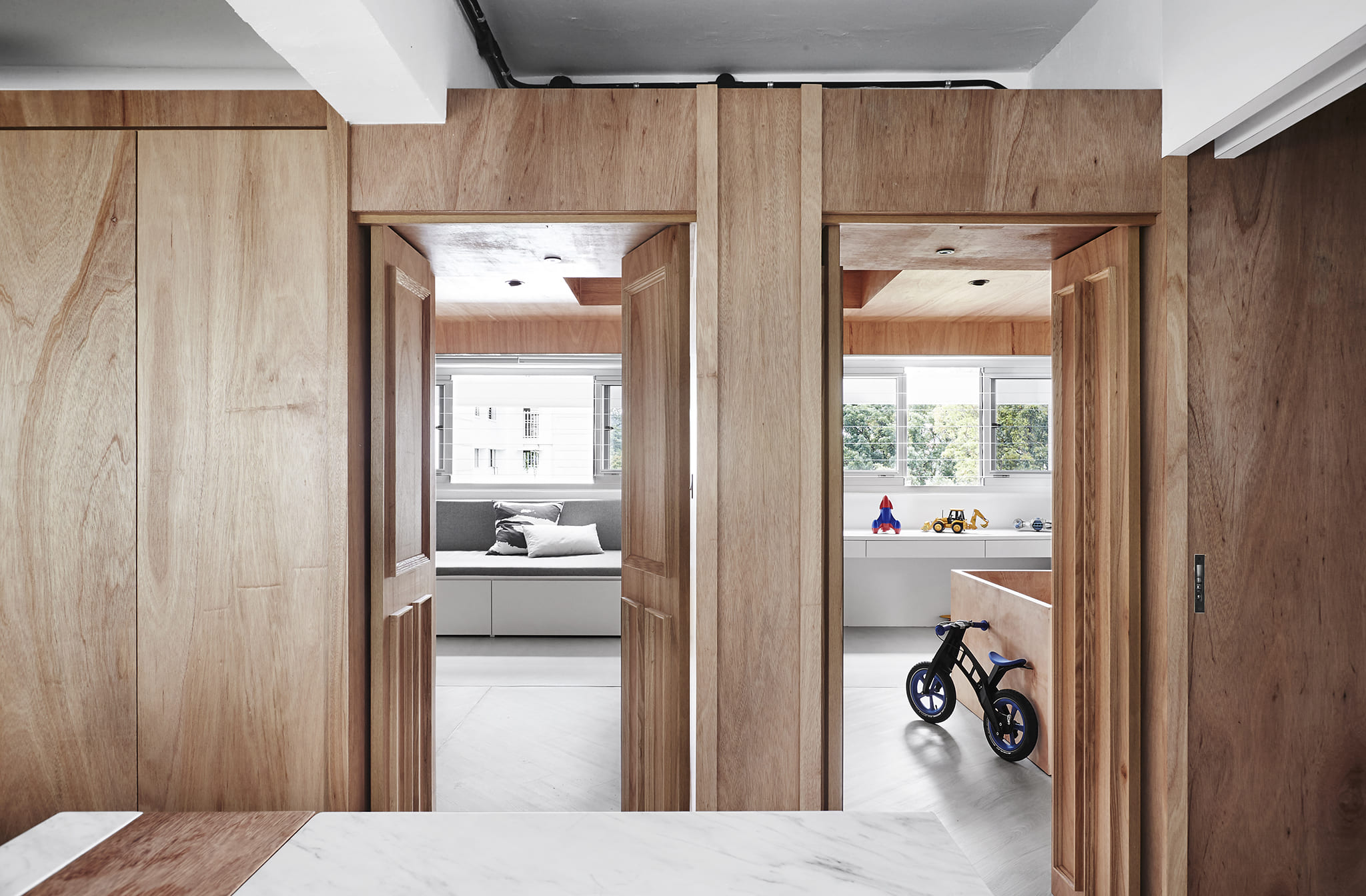
Eschewing the typical plan of such public apartments where rooms are accessed via a long corridor, we snaked the living room, dining room, kitchen and master bedroom around the ‘crate’. Within it, we situated a series of spaces that can be closed off at will. Freeing the plan enabled us to also free the way we designed each space.
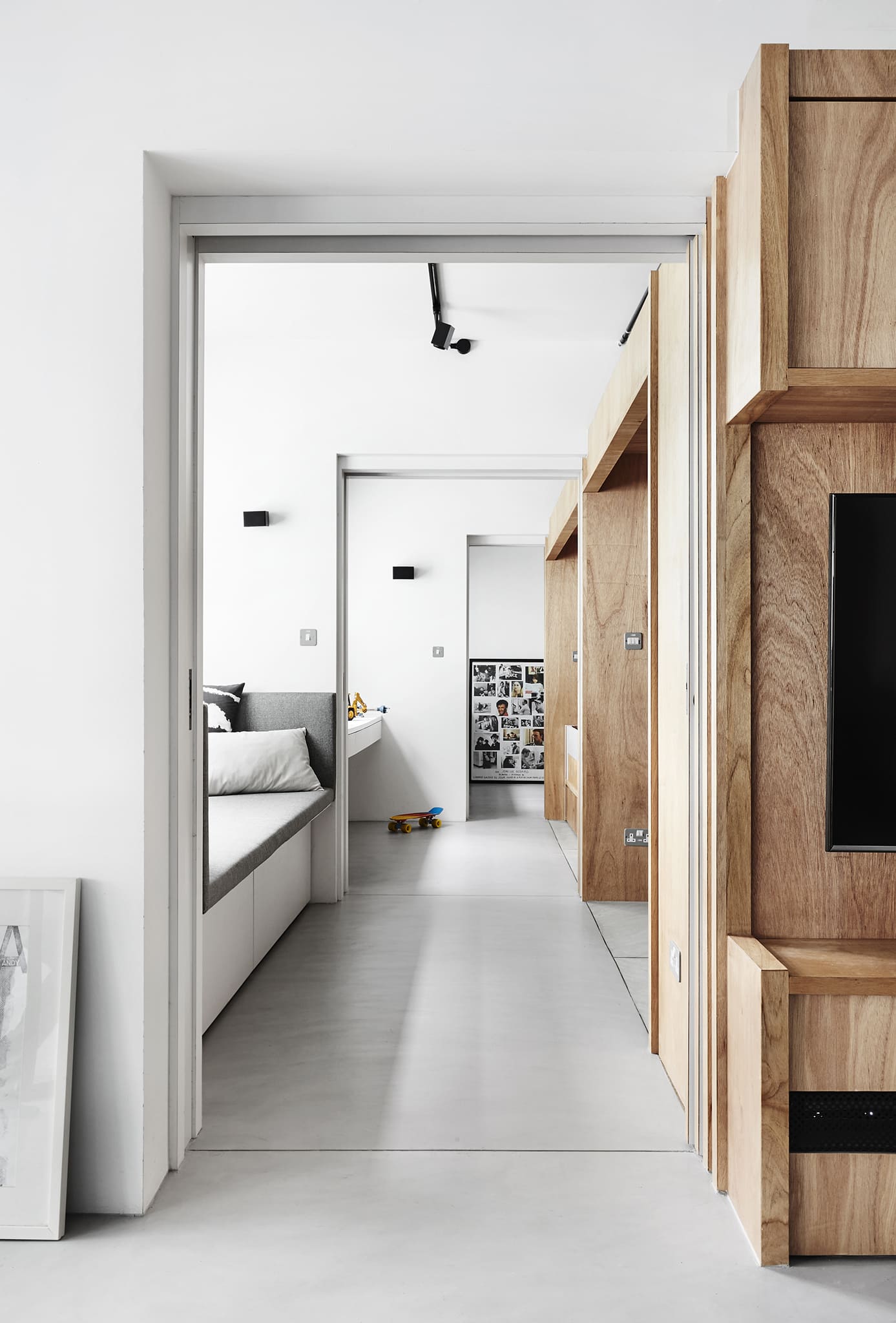
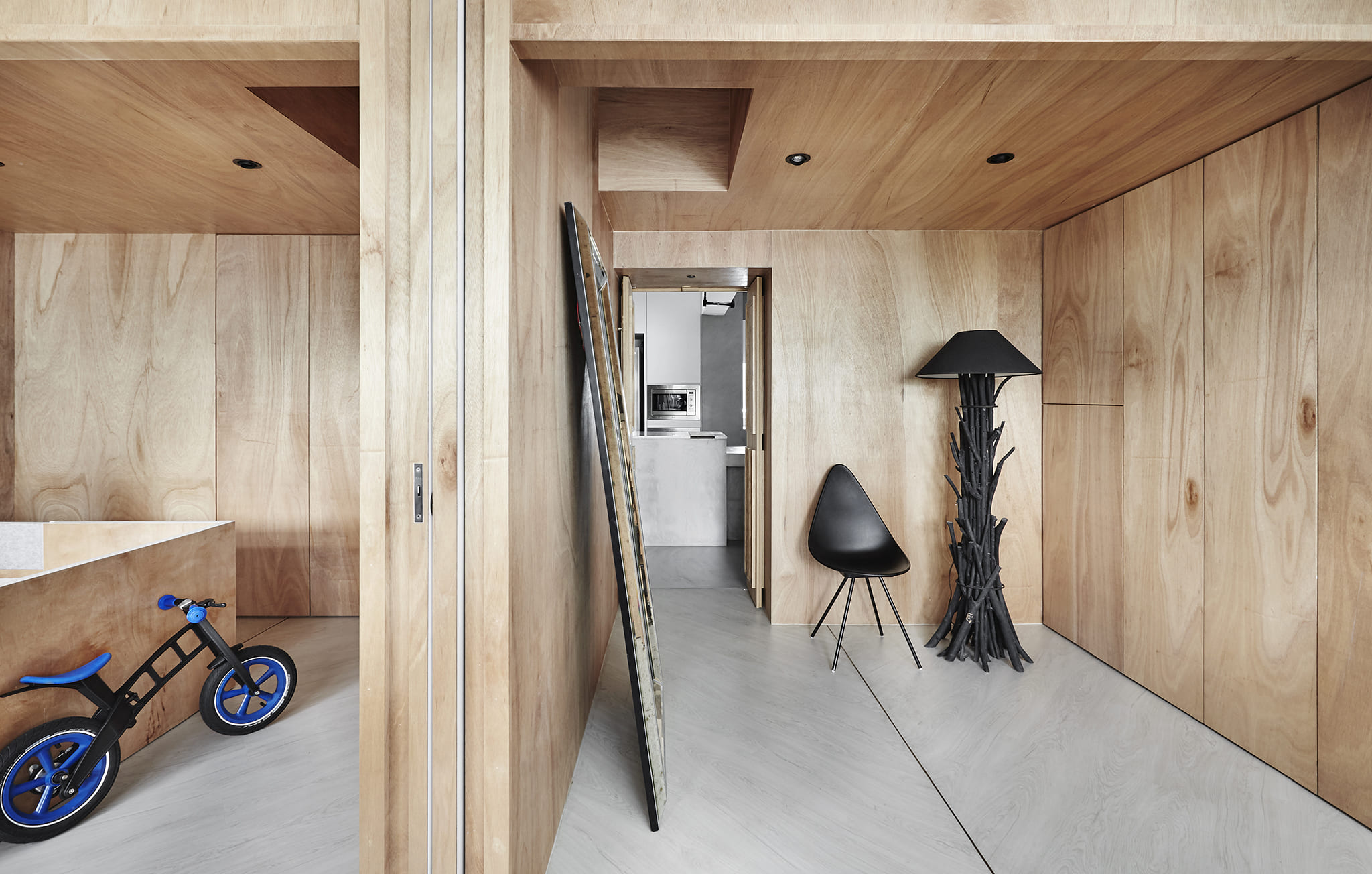
Plywood was chosen to distinguish the ‘crate’ from surrounding white-painted walls. We found its raw aesthetic fitting to our carefree agenda of creative restricting of space. To manifest the purity of the inserted volume, we were adamant that components like doors, joinery and even the child’s bed, which lies in the crate’s domain, were formed of the same material.
But we made exemptions for deliberate insertions, such as a vintage iron door attached to the crate, which we salvaged from the historic Capitol Theatre. It attaches to the crate in a nonchalant spirit, marking a corner of the living and dining areas like a piece of street art usurping the familial template. Overhead, electrical cables become graphical lines that follow the trajectory of the space around the crate.
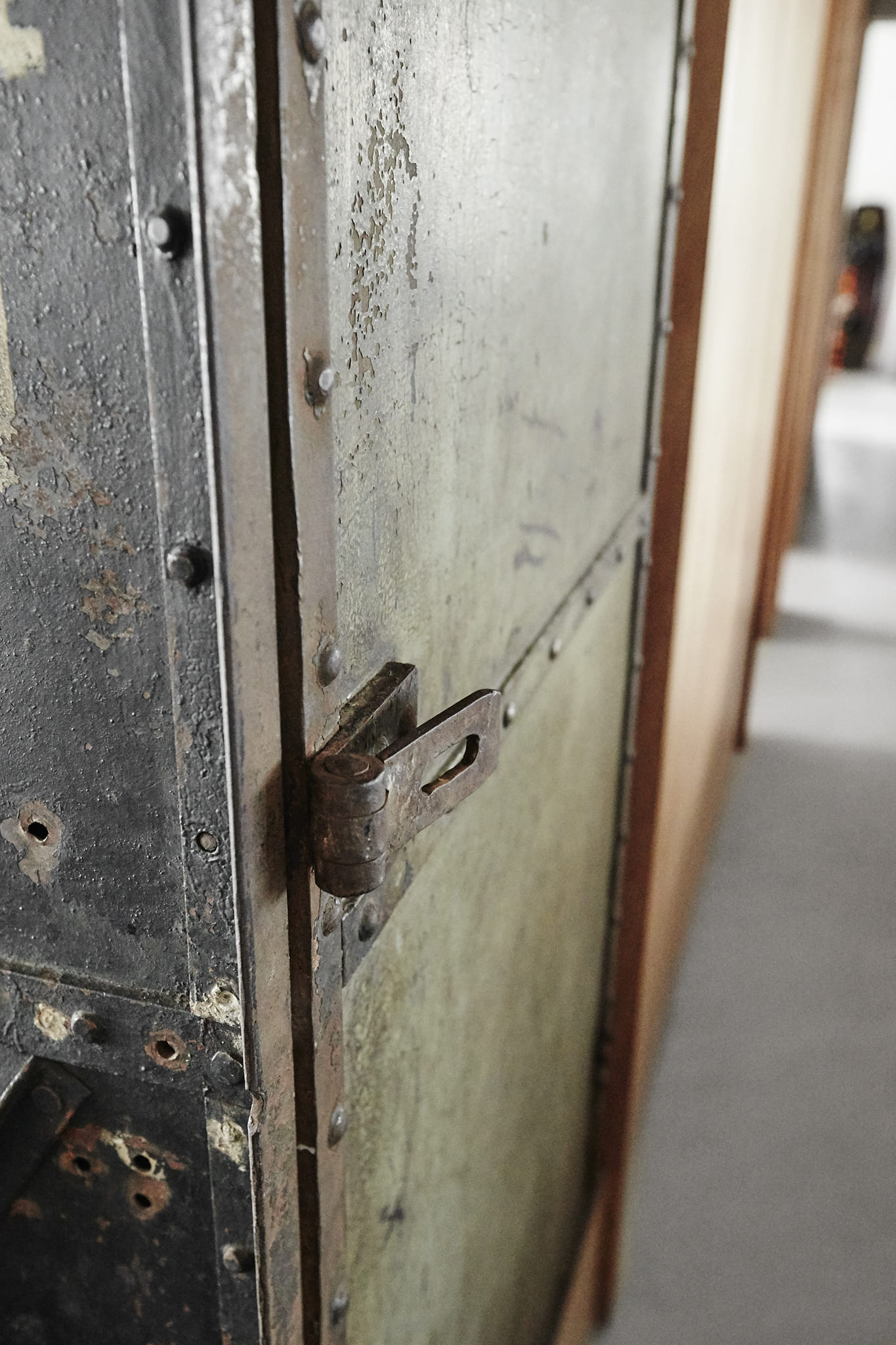

This apartment’s design was very much about establishing a new order in the domestic framework though a key tectonic idea, manifested clearly and without compromise.